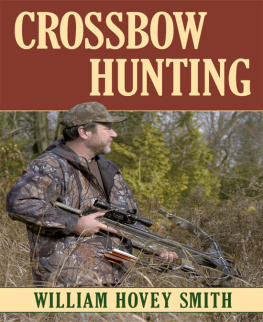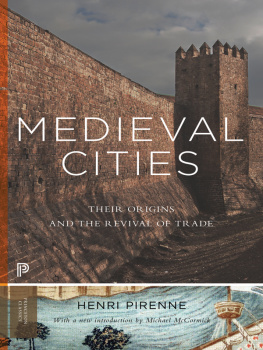The Medieval Crossbow
The Medieval Crossbow
A Weapon Fit to Kill a King
Stuart Ellis-Gorman
First published in Great Britain in 2022 by
PEN & SWORD MILITARY
An imprint of
Pen & Sword Books Ltd
Yorkshire Philadelphia
Copyright Stuart Ellis-Gorman 2022
ISBN 978-152-678953-2
eISBN 978-152-678954-9
Mobi ISBN 978-152-678954-9
The right of Stuart Ellis-Gorman to be identified as Author of this work has been asserted by him in accordance with the Copyright, Designs and Patents Act 1988.
A CIP catalogue record for this book is available from the British Library
All rights reserved. No part of this book may be reproduced or transmitted in any form or by any means, electronic or mechanical including photocopying, recording or by any information storage and retrieval system, without permission from the Publisher in writing.
Pen & Sword Books Ltd incorporates the imprints of Pen & Sword
Archaeology, Atlas, Aviation, Battleground, Discovery, Family History, History, Maritime,
Military, Naval, Politics, Social History, Transport, True Crime, Claymore Press,
Frontline Books, Praetorian Press, Seaforth Publishing and White Owl
For a complete list of Pen & Sword titles please contact
PEN & SWORD BOOKS LTD
47 Church Street, Barnsley, South Yorkshire, S70 2AS, England
E-mail: enquiries@pen-and-sword.co.uk
Website: www.pen-and-sword.co.uk
Or
PEN AND SWORD BOOKS
1950 Lawrence Rd, Havertown, PA 19083, USA
E-mail: Uspen-and-sword@casematepublishers.com
Website: www.penandswordbooks.com
Contents
Dedicated to my parents Michael and Margaret
List of Illustrations
Colour Plates
Acknowledgements
This is the book that I wished I had read when I started my PhD back in 2011. Ten years, one PhD, child, and pandemic later I wrote it myself, and I want to thank all the people who helped make it possible. First and foremost, my wife Emily who was supportive and patiently listened to me talk about crossbows more than any human should have to. My parents for all the support they have given me and my interest in history over the years. I must acknowledge, but possibly not thank, my daughter Kai who has made the experience of finding time to write even more interesting but who also provides me with motivation in her own way. I would like to thank my editor Rupert Harding for putting up with my many questions and reading the many drafts I sent, as well as the rest of the team at Pen and Sword for ensuring my text has all the polish that I alone could not give it. Thanks are also due to the Chester Beatty Library in Dublin for kindly letting me use one of my favourite surreal medieval images of the crossbow for this book. In addition, I must thank my wife again as well as Melissa Vandiver for their joint work crafting three valuable diagrams used in this book. Lastly, I would like to thank people who gave me advice, book recommendations, or let me bounce ideas off of them, including Adam Simmons, Richard Herzog and Nick Blanton as well as the whole community at AskHistorians which has been essential in keeping me interested and engaged in history over the years.
Introduction
On 25 March 1199, King Richard I of England (r. 118999) decided to patrol outside the walls of the Chteau de Chlus-Chabrol. This was a small castle in Aquitaine, a province he had inherited from his mother, and hundreds of miles from the Kingdom of England he had inherited from his father not that Richard spent much time in England. He had been besieging the castle for some time and he may have decided to inspect the progress of his sappers in their attempts to breach the castles defences, or perhaps he was planning an assault of the castle and wanted to see the state of the siege with his own eyes. Regardless of his motivation, Richard soon came to regret his decision. While he was on patrol one of the defenders looked over the wall, unperturbed by the shooting of Richards own archers, and took a shot at the passing king with his crossbow. Richard was unarmoured, relying instead on a large shield carried by a retainer to protect him, and the defenders bolt lodged itself deep in his shoulder. Richard was carried back to his private tent, where his physicians attempted to remove the crossbow bolt. The first attempt snapped the bolt shaft which forced the surgeons to cut the king open and extract the metal head. This process was no doubt excruciating and badly damaged his shoulder. The wound soon became gangrenous, and Richard was bedridden. While the king lay dying in his camp his forces successfully completed the siege and put the castles defenders to the sword. Richard died on 6 April, just over a week after he was shot. His brain and entrails were buried in the castles chapel, his heart was sent to Rouen to join his elder brothers body, and his body was transported to Fontevraud Abbey in Anjou, where his father had been buried almost a decade earlier his mother would join him there five years later.1
Remarking on his death, the French chronicler William le Breton (c.1165c.1225) found a certain poetic irony in his fatal wounding by a crossbow. William accused Richard of introducing the sinful crossbow to France in the first place, so it was only fitting that it also relieved Europe of his presence. William was completely mistaken; Richard could take no credit for the invention of the European crossbow. The crossbow had been banned in inter-Christian warfare at the Second Lateran Council in 1139, nearly 20 years before Richard was born, and its origins were much older than that. While Richards death is clear testimony that the ban was not very effective, the Second Lateran was a famous council and a man of the church like William would have been at least somewhat familiar with its decrees.
Why, then, would William include such an obviously false claim in his account of the kings death? The line about Richards supposed introduction of the crossbow appears in only one of William le Bretons two accounts of Richard Is death. In Williams Gesta Philippi, a prose chronicle about the life of King Philip II (r.11801223) Richards famous French rival Williams account was a nearly identical if abridged copy of the version of events presented in the work of Rigord (c.1150c.1209), another French chronicler who wrote several decades before William. According to Rigord, Richard had besieged the castle because he desired a recently-discovered treasure a golden figure of a Roman emperor but he was shot and killed by an unknown crossbowman. Rigord did not provide much more detail around the events and while he did portray Richard as a man motivated by petty greed his version lacks Williams accusations that Richard introduced the sin of the crossbow to France.
It was in his Philippide, a panegyric written to celebrate Philip IIs victory at Bouvines in 1214, where William really let his imagination run wild. In this telling the death of Richard I is a 200-line literary set piece that marks the thrilling conclusion of Book V. The passage about the introduction of the crossbow is part of a 31-line speech delivered by one of the three Fates who decided that even though her sisters were still weaving Richards life, it must be cut short. She guided Archard of Chalus the lord of the castle and person who we are told found the treasure in the first place to discover a hidden crossbow bolt because: This is how I want Richard to die, for it was he who first introduced the crossbow into France. Now let him suffer the fate he dealt out to others.2 Richard is then shot and killed with that same bolt, his fate justified by his lifetime of villainy.
Next page









